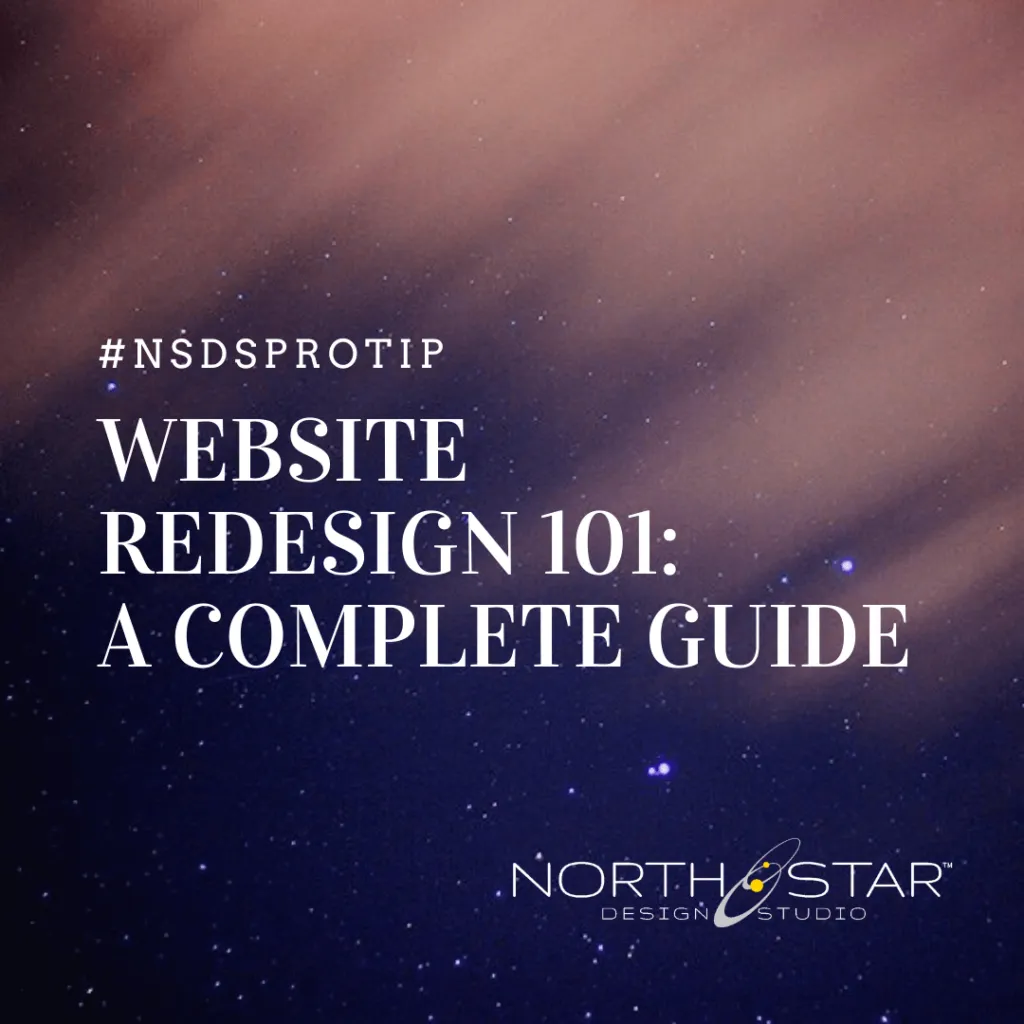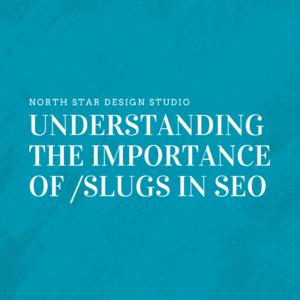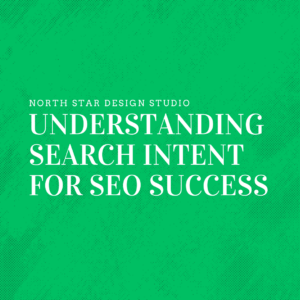Refresh Your Old Site for Better Conversions and Improved Sales
Your website is the center all other digital marketing efforts revolve around. If it has an outdated design, poor search engine rankings, few conversions, or a high bounce rate, it is time to go all-in with a website redesign service or rebuild. Updating your website can help you keep up with changes in consumer behavior and improve the results you get from your online efforts.
This in-depth guide will outline some of the reasons for a site redesign and how to choose the right web design partner.
Do I Need a Website Refresh or a Brand New Site?
At the heart of this question is whether or not a website refresh of their old site is enough or worth the added investment. There’s no one size fits all answer to that.
At NSDS, many of our clients ask about the difference between a website refresh/website redesign project and a full website rebuild (new site).
A redesign can be compared to renovating an old house. A “redesign’ can make a house look better and you can typically squeeze in a few modern updates. But if you need to go deeper with major improvements, you will probably discover structural flaws that require a major overhaul.
A redesign will focus on upgrading surface content and style but often doesn’t touch upon some deeper issues related to SEO or underlying code which affects user experience in bounce rates (time spent on pages) as well as improving loading speeds for your site
Why should you build a new website from scratch?
A website rebuild involves starting from scratch to ensure that the new web construction is fully inline with today’s best practices and modern technology. This includes ensuring your site operates correctly, both technically as well aesthetically. It’s also a great opportunity to update content and forms in a way that helps users understand what to expect when working with you. Starting from scratch gives you the opportunity to ensure it plays nice with current SEO standards for Google search engines like keyword density or page load time.
It is a complete process of restructuring your site that includes upgrading content, renewing layouts, and enhancing navigation for improved conversions and site performance.
Is the website redesign process worth it?
A website redesign is not a decision to be taken lightly, as it can have lasting effects. Establish businesses that feel their site has plateaued and would like more visitors might consider going with a full site rebuild. This gives them the opportunity to revisit their customer’s journey and meet prospects ‘where they are’ in their buying process. This is accomplished by marrying content and site structure against the real-time success the business is having with clients. Diving deep into where the real ROI is and using the website to attract similar, great clients (and more of them!).
The following statistics show how important a website redesign is for your online presence.
- 38% of your visitors will leave your site if they find your content or layout uninteresting.
- The average lifespan for a website is 2 years and 7 months. After this, the website starts to feel old and requires redesign.
- It takes about 50 milliseconds for the user to form an opinion about your website.
- 57% of internet users don’t recommend a website that is not mobile responsive.
Website redesign is no longer an option! It is a necessity if you want to promote your business online for better sales, rebrand your company or highlight your most profitable services. But how do you know your current website is underperforming? The following are the tell-tale signs it’s time for a website redesign.
10 Signs it’s Time to Redesign your Website
Build a smarter website for making your brand successful
A Website redesign project is not just about making your website more attractive, it’s also crucial to the success of any business. Your business (whatever form its marketing takes) relies heavily on the touchpoint prospective customers have with your website and it’s your only 24/7 salesperson.
The following are the important reasons for a website redesign.
1. Design Is Outdated
It is time to let that old design die
Old website designs should be put out to pasture if they haven’t been udated regularly or within the last 18 months.
The reason being is that your prospective customers have expectations. They expect, at a minimum, to see ‘modern’ design. While some fads come and go, there is a steady ‘evolution’ to website design which, in our experience, becomes tangible every one to two years.
Now, this does not mean you need a full site redesign every other year. Instead, it could be something as simple as a ‘refresh’ of the homepage, header, and navigation bar which evolve more quickly than other design trends.
That being said, websites that look ‘so 10 years ago’ are screaming at prospective clients and not in a good way. Just as clothing and kitchen appliance trends evolve through time, so do website designs. Keeping up with the latest web design results in more traffic and better conversions.
2. High Bounce Rate
Your traffic analytics tell the story of your web design’s performance
The bounce rate is the percentage of single-page visitors to your site. In other words, it is the percentage of visitors who just visit the first page and leave your site. Visitors who bounce either did not find what they were looking for, or found your website too slow or difficult to use.
A new design (or update) can help fix some of these problems and persuade readers to stay longer. This is accomplished by adding useful content, like FAQs and enhanced service descriptions, that let customers know what to expect when working with you.
If your bounce rate is consistently greater than 70-90 percent across your site, it is safe to say that a new website (or, at the very least, updating content) should be considered.
3. Poor Mobile Responsiveness
One of the biggest mistakes a company can make is to underestimate the value of having a mobile-friendly website. The mobile browsing environment has become so prevalent that it accounts for over half of all web traffic worldwide, up to 70% by some accounts!
With this many people surfing the web via their mobile devices, you need a website that works on any screen – not just desktop computers or laptops. Mobile-Friendly Websites also load much faster than their unoptimized counterparts; plus search engines reward websites using responsive designs by ranking them higher when users perform searches from tablets and smartphones too.
4. Difficult to Navigate
Your visitors hate rabbit holes
Is it possible for your visitors to find what they’re looking for in two clicks or less? Is your menu straightforward, or complicated? If your website structure is based on best practices from the previous decade, you are losing web visitors. Do you actually understand what prospects want out of your website 9ex: quick scheduling, easy access to estimates, FAQs)?
Most internet users are accustomed to finding information in specific places on a website. Putting content in unusual places, burying content or having too many menu tabs will lead to unnecessary confusion. As a result, your visitors may abandon your site and go to your competitors’ websites.
5. Outdated Website Content
Static websites are a thing of the past. It is important to upload new, compelling content, regularly, thinks FAQs, blogs, and adding new services.
Beyond adding new content, it’s almost more important to keep the site’s content up to date. Removing old specials, discontinued services + updating hours, forms and contact details are all key ‘health check’ points that businesses should undergo on a regular basis.
Modern WordPress admin dashboard makes updating and adding content much easier than in years past, often with simple ‘drag drop’ tools. This allows us to add, change, and update web content.
Often we provide recorded ‘off-boarding’ training to customers who anticipate needing to update content regularly (ie: posting blogs). This is a huge benefit to clients and a service we recommend anyone considering a website design or redesign ask their developer about during their initial consultation.
6. Poor Conversion Rate
A bad web design costs you customers
A website’s “bounce rate” references the time a visitor stays on your site and includes how many pages they visit, and Google is watching!
The longer a user stays on your site (and the more pages they visit) the more ‘points’ search engines give your site which boosts you (organically) in search rankings.
So if users land on your site and aren’t immediately drawn in with an appropriate call-to-action, or relevant information, the faster they’ll leave your site and the farther down the rankings you’ll slide.
Now’s a good time to talk about ‘conversions’ as well. A conversion is when a visitor does something you want them to do (ie: schedules a consultation, signs up for an email list, requests an estimate, completes a purchase, etc.).
Implementing calls to action on each website page, including your blog, will significantly contribute to your bottom line by converting visitors into leads. If your current website isn’t converting as many people as you’d like, it’s time to consider ‘why’. Is it content, function, design, or flow?
7. Poor Search Engine Rankings
You lose your credibility in the eyes of Google
If you aren’t getting traffic (visitors to your website) from search engines (ie: Google), your business may feel like it’s plateaued.
Your website must be found organically on Google if you wish to have a steady stream of potential clients. ‘Organically’ means found without paid advertising.
At North Star, our website redesign service includes developing and uploading improved website content as a part of a strategy. The keyword-focused content will signal search engines like Google that your web page is relevant to the search queries of your potential clients. Having a steady stream of visitors to your website means you’ll be getting more leads and making more sales.
8. Loading time is too long
The faster your site loads, the better it is.
Web users have a very short attention span (3 to 7 seconds by some accounts), so you need to ‘capture’ them almost instantly. Keeping your site loading quickly improves the visitor’s experience and it helps you rank higher in search engine results!
9. No Social Media Integration
Your website and social media should marry as they share the same goals <h4>
Social media has become an indispensable element of our culture and is critical for B2C, B2B and non-profit organizations, thus it should unquestionably be a factor in your website strategy.
North Star often advises clients to integrate their off-website profiles (Facebook, LinkedIn Angi, etc.) within their website design. This can include adding profile links and social media feeds to specific pages. This can also mean creating reputation management automations that encourage customers to leave reviews.
Your website should also make it simple for people to share your content (like FAQs and Blog posts) on social media.
#NSDSPROTIP
North Star coaches clients on how to use their website as the ‘starting point’ for as much content as possible. For example, what happens if you’ve used LinkedIn to post all your original article content and LinkedIn goes away? Then your content goes away too. This is way less likely to happen if the content originates from your website.
10. Your website no longer represents your company.
Your brand must shine through your website.
Beyond your brand though, your website must reflect the actual services you offer today. Chances are that your business has naturally evolved over the years, perhaps even more so this past couple (#thankscovid). It’s likely you’ve added any new services and goods or changed your processes and pricing. If you have, does your website reflect those changes? If not, it may be time for a refresh or even redesign.
How to Choose a Website Redesign Service
How do you decide which designer or agency to partner with? We’ve put together four pointers to assist you in choosing a web design firm. And these are solid tips, whether you choose us or not!
1. Make a List of Your Website Goals
Consider why you are redesigning your website and which problems the new professional website needs to solve. Create a list of actionable and achievable goals.
Some other examples of website goals are:
- Generate more leads and manage them better
- Improve Conversions
- Alleviate administrative work for your team
- Synchronize your CRM software
- Connect your marketing automation software.
- E-commerce functionality
- User-friendly navigation
- Take payments or donations
- Improve Mobile Optimization
- Leverage Your Content Marketing Strategy
Your website goals should reflect in the website redesign strategy. Once you know why you want your redesigned website, it will be easy to find out how to do it.
2. Timeline and Budget
Your budget and timeline are other important factors to consider before contacting or engaging any web design professional. While you may not know the exact website redesign cost, establishing a range you’re comfortable with (ex: $4,000-$6,000) will help you readily vet and compare web design quotes in a realistic way and within your budget. I talk more about budgets and how much a website costs to build in this article.
Timeline is also important to consider when vetting a web design agency. You need to check the availability of the web designers if you need your website up and running by a specific deadline.
3. Review Experience and Agency Culture
Now that you have a list of goals and a budget, start searching for potential web design agency partners. Search for agencies in the local area as well as nationally.
If your designer has only worked with on a handful of projects where the budget was super low, there’s a strong possibility that your new website won’t be able to succeed. The more techniques and audiences they’re familiar with can help make sure you meet all business objectives for this project effectively as well as strategically grow in other aspects too!
The culture of an agency will reveal a lot about its personality and working style. Ideally, you want to choose one that has the same as your own so it’ll be easy for both parties involved—throughout the process from design all the way up until implementation into site or app development.
You can learn about agency culture by checking them out on social media and blog articles. Another way of knowing the agency culture is by meeting your potential designers or project managers via Zoom. If they make you feel welcome, pay attention to your suggestions, and are enthusiastic about your project, they are a good fit. You can also enquire about the redesign process to develop a better understanding of them.
4. Go Through Your Portfolio and Online Reviews
Go through the portfolio of your prospective design agency. Read testimonials and internet reviews of the web design agencies you’re considering hiring. The reviews are a good method to evaluate how satisfied clients are with their websites, the level of customer support they experienced while working together, and if they specifically highlight individual team members.
Check out reviews on Google, Facebook, and LinkedIn. In addition, check if they emphasize testimonials on their website. If the only place you find reviews is on their website, do a little more research before requesting a meeting with them.
The Key Takeaway
A new website design may sound intimidating, but partnering with the right web agency can help you achieve your desired results within a budget and timeline.
Your website is the first impression that potential customers will have of your business, so it’s worth researching and selecting a partner who will assist you in achieving your online objectives.
NSDS specializes in creating fully managed SEO-friendly web designs for established service-based businesses like yours! Schedule a free consultation today to get started on designing or redesigning your site.





